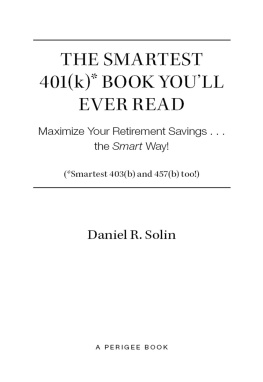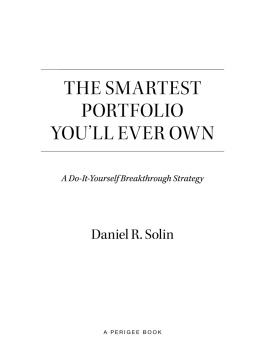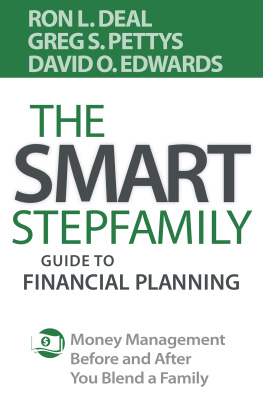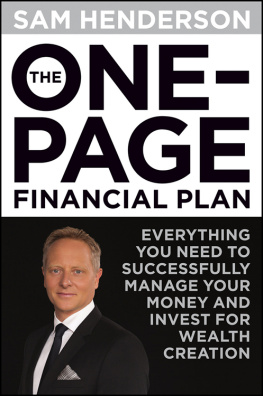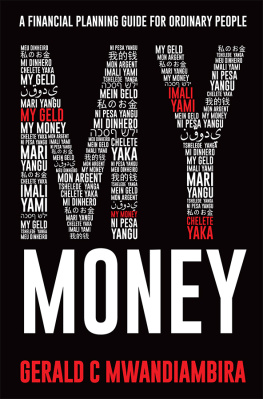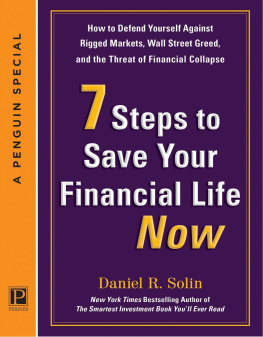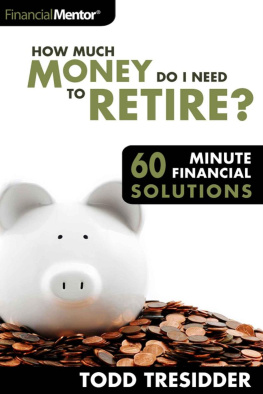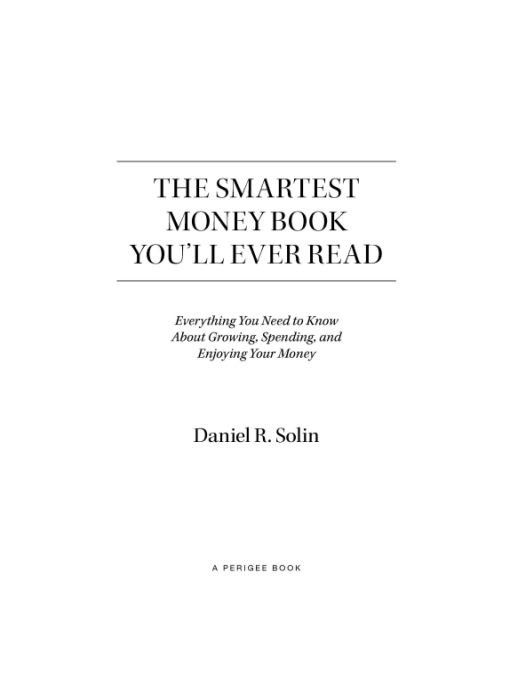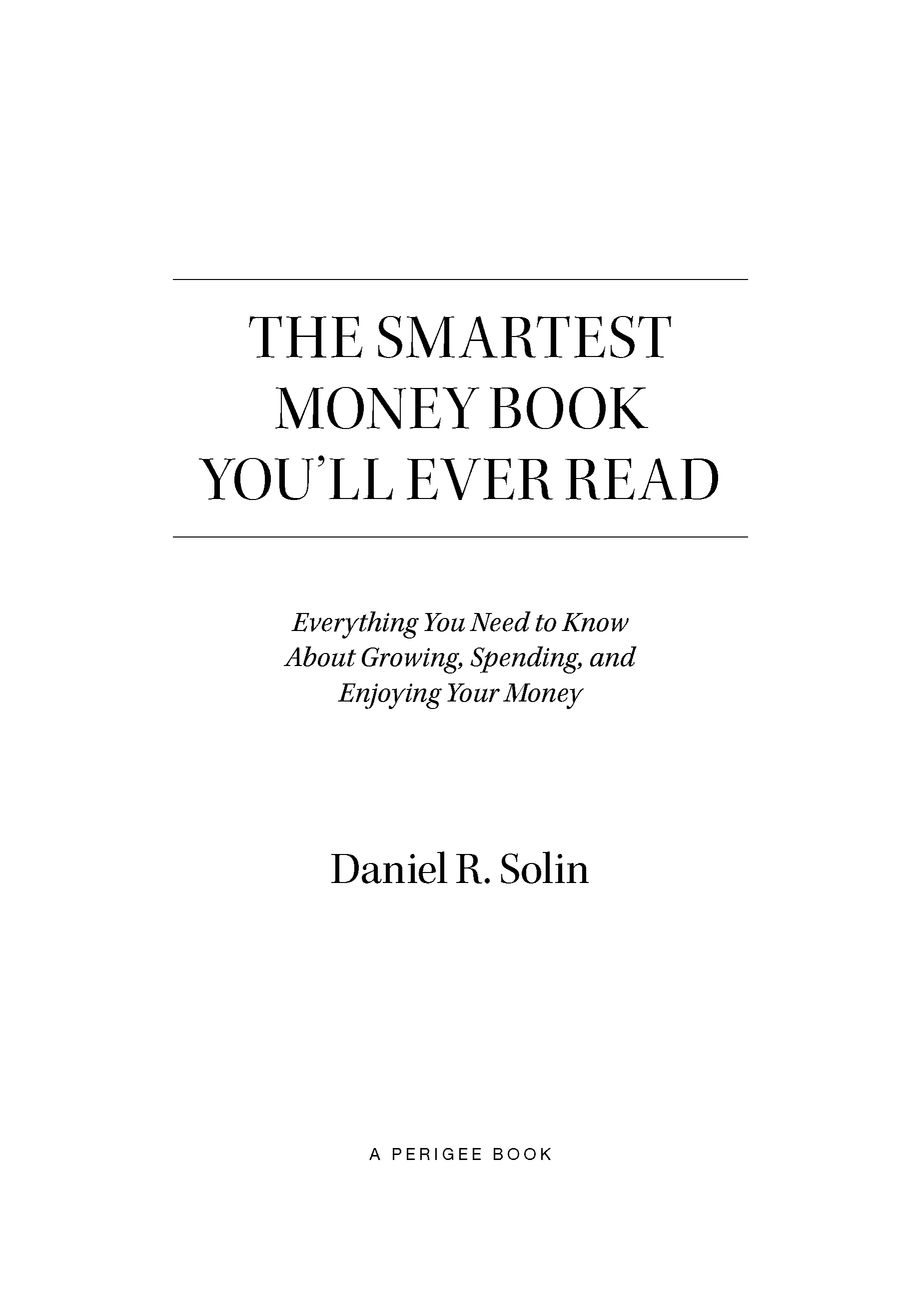Table of Contents
Also by Daniel R. Solin
DOES YOUR BROKER OWE YOU MONEY?
THE SMARTEST INVESTMENT BOOK YOULL EVER READ
THE SMARTEST 401(K) BOOK YOULL EVER READ
THE SMARTEST RETIREMENT BOOK YOULL EVER READ
THE SMARTEST PORTFOLIO YOULL EVER OWN
To Millie and Jack.
With you as our future, I like our chances.
INTRODUCTION
Reversal of Fortune
If the rules dont work, you change them.
Alan Dershowitz, law professor and author
Its sad that so few people achieve financial independence. Less than 3% of the U.S. population has $1.5 million or more in assets, free of debt, and this includes the equity in their homes. A recent study found that nearly half of Americans probably couldnt come up with $2,000 in 30 days. (If youre not familiar with terms like assets or equity or if you come across any other financial terms that youre not sure you know the meaning of, you will probably find them defined in the glossary.)
This reversal of fortune for so many Americans is dispiriting. This book will help put you on sound financial footing.
This is not a book about how to get rich quick. But even if you are 60 and broke, I can show you how to become free of financial worries in a year or so and then rebuild from there. If you have 5 to 10 years, I can show you how to become financially comfortable. If you have more time, or have a good starting base of assets, I can show you how to become wealthy.
You dont need a lot of money to implement my suggestions. You can start small. If you dont have a high income, if the value of your portfolio or your home has fallen, or if your retirement plans have been derailed, you can rebuild. The secret is to plan and budget.
If youre like most people, the lack of planning and budgeting is precisely the problem. Its boring. Its a hassle and its time-consuming. Those problems can be solved with a few simple tools, many of which youll find online. Obtaining information, making calculations, and making and tracking transactions are easy and even fun to do online. The power of the Internet lets you find, compare, and get the best deals available on financial services you are probably already using.
Harnessing the power of the Internet, along with solid goal setting, financial planning, budgeting, saving, and investing, will lead you to financial independence. I define financial independence as not working (unless you want to) and being able to live on interest, dividends, and reasonable withdrawals of capital.
You dont have to use the Internet to benefit from this book. The key things youll be doingsetting financial goals, developing your approach to risk, allocating your investments, and deciding where to spend your moneyare all things you can do with a pencil, paper, calculator, and telephone.
About the Internet and Mint.com
The problem with most financial planning tasksand the main reason to use online toolsis that the amount of information to be gathered, massaged, and tracked can be massive.
If youre like most people, you buy hundreds of products and services from scores of sources every year. You probably also use many financial services, like life, health, disability, auto, and maybe business insurance, a few credit cards, a debit card, certainly a checking account and a savings account, certificates of deposit (CDs), a 401(k), and perhaps mutual funds, individual stocks, or bondsand maybe some gold or other alternative investments.
Thats where Mint.com comes in. Mint.com (www.mint.com) is the worlds largest free online financial planning site. With more than 6 million registered users, Mint.com provides a range of useful and easy-to-use online budgeting, planning, tracking, and shopping tools that make controlling your finances as simple as clicking your mouse. Mint.com also provides links to approximately 16,000 banks, brokerage firms, mortgage companies, lenders, and other financial intermediaries. It puts you in the position of having them compete for your business.
Ill tell you more about Mint.com at points in the book where this site and its tools might benefit you. At those points, youll see Mint.coms little mint-leaf logo and a bit about how the site can help you with that step or task or make that aspect of your financial life easier.
When you see the little mint-leaf logo, you can think of it like you would the little red chili peppers on the menu in an Asian restaurant that points out hot and spicy dishes. Use it or not at your discretion. You do not need to become a registered user of Mint.com to access the information referred to in the Mint Hints throughout this book.
I have no association with Mint.com, other than obtaining its agreement to use its logo in this book and to reference its website where appropriate.
Where Were Going
The investing principles in this book are grounded in the approach I presented in my four previous books on investing. Younot your advisers, planners, or bankersare the one who is in charge of your financial life. Over the long term, you will not build wealth by what I call hyperactive investing or other attempts to chase outsized returns. But you will build wealth by investing in a portfolio of solid, diversified stock and bond index funds.
Dont hand responsibility for your financial future to a financial planner who may or may not have your best interests at heart. There are times you can benefit from having the right kind of financial planner, and Ill point those times out in this book.
My approach to financial planningmuch like my approach to investingwill provide you with specific guidance for achieving your financial goals, in ways largely ignored by others. Heres what you can expect to learn:
1. How to rebuild from the devastating financial reversals of the past several years.
2. How to free up money to invest and begin the journey to put you on sound financial footing.
3. How to access the tools at Mint.com (if you choose to do so) for budgeting, tracking, investing, and shopping for financial services.
4. How to avoid becoming a victim of financial institutions who remain dedicated to making money at your expense.
5. Why financial planning is an absolute necessity in the current financial climate of turbulence and uncertainty.
I know this sounds like a tall order, but I think youll be surprised at how easy it really is.
Lets get started.
PART ONE
Wrapping Your Mind Around Your Money
Building wealthor reversing your downward spiraltakes thought and planning. Thats because so many forces work hard to compel you to spend your money rather than save it. When you save money, equally powerful forces can operate to have your money work for you rather than for others. But you have to engage those positive forces.
In this part, you will start thinking about what you want from your money and how to go about achieving those goals.
CHAPTER 1
Bad Things Happen to Good People
Middle-class culture in the United States rests on the precepts of human capitalisminvest in your own skills and those of your children, and the market will reward you. These precepts now seem shakier than they have in the past.


